The complete Australia driving and rental guide
Speed Limit and Traffic Signs
Driving is on the left-hand side of the road. Do not overtake on the left-hand side and do not overtake if there are solid white lines. At roundabouts, you must give way to vehicles already on the roundabout and select your lane early.
 Speed Limit
Speed LimitThere are speed limits of 100-130 km/h on freeways and 50 km/h in built-up areas.
 Traffic Signs
Traffic SignsThese are some specific signs you may encounter and be unfamiliar with when driving in Australia. Even though most of them are self-explanatory, it is strongly advised to make sure you can understand them before taking the road.
Australian regulatory signs have different shapes.
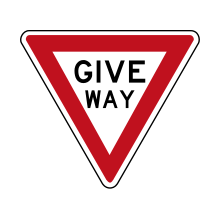 Give Way
Give Way Stop
Stop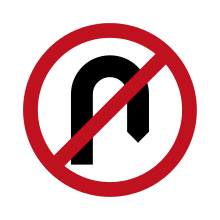 No U-turn
No U-turn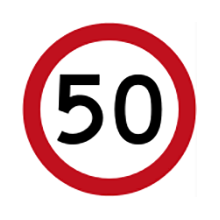 50 km/h Speed Limit
50 km/h Speed Limit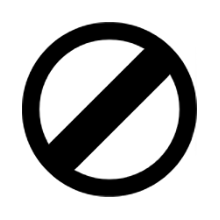 Speed Derestriction
Speed DerestrictionWarning signs are diamond-shaped and mostly with a yellow background.
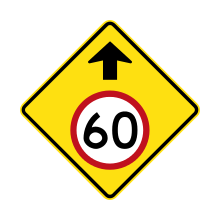 Speed Limit Ahead (Used in Western Australia)
Speed Limit Ahead (Used in Western Australia)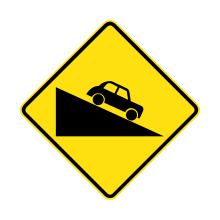 Steep Descent
Steep Descent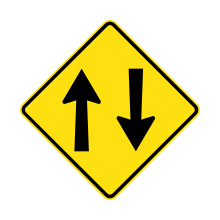 Two-way Traffic Ahead
Two-way Traffic Ahead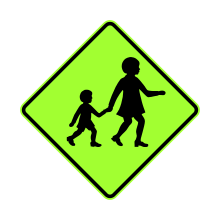 Pedestrians
Pedestrians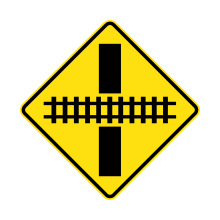 Railway Level Crossing on Road Ahead
Railway Level Crossing on Road Ahead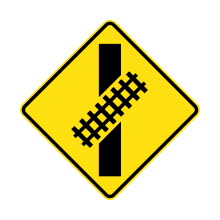 Railway Level Crossing on Road Ahead (Skewed) (Left)
Railway Level Crossing on Road Ahead (Skewed) (Left)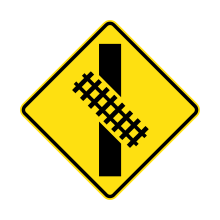 Railway Level Crossing on Road Ahead (Skewed) (Right)
Railway Level Crossing on Road Ahead (Skewed) (Right)Information signs are rectangular with red or green backgrounds.
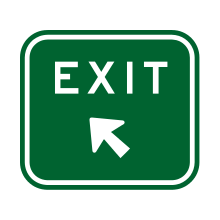 Exit
Exit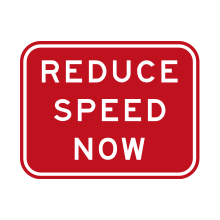 Reduce Speed Now
Reduce Speed NowFor a complete traffic and road signs, you may refer to this Australia road user handbook.
Seatbelt and Child Safety
 Seatbelt Laws
Seatbelt LawsAll passengers are required to have their seatbelt fastened at all times when the vehicle is moving. Failure to do so can result in a fine of AU$250.
 Booster Seat Laws
Booster Seat LawsBabies up to 6 months must be installed on a rear-facing car seat, and children from 6 months to 4 years are allowed on both forward and rear-facing seats.
Please be aware that children up to 4 years old cannot travel on the front seat unless the car is a two-seater.
Finally, a booster seat or forward facing seat must be used for children between 4 and 7 years old. A child of this age is only allowed on the front seat if there is no other seat available for them.
Parking, Fuel and Toll
 Parking
Parking· Forbidden Parking
Cars are not allowed to be parked on the following spots as doing so can result in a fine:
- On the footpath or nature strip as these places are for people.
- On a yellow line.
- In a way that blocks other cars from entering or exiting the driveway. In an emergency, the car may be towed away.
- Less than10 metres (approximately 2 large car lengths) from an intersection so that other cars can safely pass without causing danger.
- In a place that has been marked with ‘No Stopping’ or ‘No Standing’. A ‘No Standing’ sign indicates motorist may not park a car unless they remain in the vehicle and for no more than three minutes.
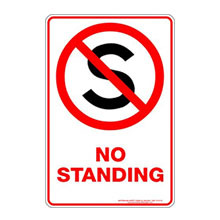
· Parking Signs
Parking signs in Australia may specify multiple times, places, durations, restrictions and vehicle categories in a condensed form on a single sign. Letter P signs are 'permissive' parking signs where parking is permitted for the time specified. A guide to the most common parking signs is below:
- '1/2P', '1P', '3P': Vehicles can be parked here for half an hour, one hour, or three hours.

- '630AM-730 PM Mon-Fri': Vehicles may be parked here only at the specified times - in this case, between 06:30 and 19:30 from Monday to Friday.- 'P'(no number): Permissive parking zone
- '15 minute', '20 minute', '45 minute': Vehicles may be parked here only for the specified number of minutes
· Paid Parking
There are municipal parking garages and lots, metered parking alongside the road and ticket machine parking in most towns and cities.
 (Image from alphaairportparking.com.au)
(Image from alphaairportparking.com.au) Fuel Prices
Fuel PricesThe average value for Australia gasoline price during July to October 2017 is AU$1.26, while diesel is 3 cents higher.
 Toll
TollSydney, Brisbane and Melbourne are the only three cities in Australia featuring toll roads. Toll roads in Australia use free-flowing tolling, with no toll booth along the entire length of the system to optimize traffic flow. An electronic toll collection system is usually used instead.
If you plan to use toll roads in Australia, we suggest you rent an e-toll/e-pass device from the car hire company, enabling an automatic payment of the toll fee directly from your credit card. Please note that e-toll/e-pass devices are subject to availability at the rental desk.
 (Image from australiahereandnow.com)
(Image from australiahereandnow.com)If you have any question related to your toll fee billing, feel free to contact QEEQ' 24/7 customer service team for assistance.
Traffic Violation
 DUI Laws
DUI LawsIn all states of Australia, the legal blood alcohol concentration (BAC) limit for drivers is below 0.05%. Drink driving is treated as a major offence and any person driving a vehicle over the legal limit may face penalties ranging from the suspension, disqualification or cancellation of their licence, fines to imprisonment, depending on the gravity of the offence.
 Traffic Fines
Traffic FinesFailure to pay the road or parking violation fines can have some long-term consequences, especially for international travellers. Not paying fines could affect your next visit to Australia as infringement notice are inserted into the Police Central Names Index (CNI) and the National Names Index (NNI).
However, paying fines is not a challenge for renters since the car hire company will pass on the offence information to the authorities and a post or email notification will be sent to you if some traffic laws have been breached. Note that the fine usually comes with a service/administration fee as well.
It is advisable for you to contact EasryRentCars' 24/7 customer service team if you have any question on this matter.
Driving Licence and Age Requirements
Foreigners on short-term visit may rent a car and drive with a valid foreign driving licence for up to 3 months in Australia. Longer than that, you need to get an Australian driving licence from an Australian state. To drive in Australia, the licence should be a full driving licence held for at least 2 years with no major endorsements.
To hire a car in Australia you must be at least 21 years old (age may vary by car category). If you are 21-25, you are likely to have to pay a young driver fee. There is no maximum driving age in Australia.
Read more details
Guest reviews
Thrifty
Apex
Everything Fleet
BARGAIN
Dollar
East Coast
BARGAIN
Europcar
Europcar
Apex
ACE Rental Cars
Budget
Budget
Thrifty
Everything Fleet
Thrifty
Europcar
Europcar
Hertz
Everything Fleet
East Coast
Budget
Apex
AVIS
GOLDCAR
Apex
Dollar
Alamo
AVIS
Alpha Car Hire
Apex
Budget
No birds
East Coast
DRIVELINE RENTAL
Budget
Europcar
Apex
East Coast
Apex
Hertz
AVIS
Alpha Car Hire
Europcar
Budget
AVIS
Europcar
Thrifty
GOLDCAR
AVIS
Best car rental deals in Australia
Frequently asked questions
- Q1.What is an insurance excess?The excess is the amount you'll only be liable for in case of damage(under Collision Damage Waiver) or theft(under Theft Protection) of the vehicle.
Information about the excess will be clearly stated in the price inclusion when you reserve a car on QEEQ. - Q2. How can I add an addtional driver?You are advised to make a request upon your arrival at the rental counter. Additional charge per day will incur unless '1 Additional Driver Included' is stipulated on the rental.
Please note that the same licence and age requirement applys to the additonal driver. The addtional driver is supposed to present the required licence document along with the main driver at pickup. - Q3.What if I want to pick up or drop off my rental car out of office hours?QEEQ will show you the car offers available at your chosen time on the search results.
However, pick-up or drop-off out of general opening hours may subject to an extra fee unless self-service pick-up or drop-off is available.
After you reserve a car on QEEQ, we will inform you of specific policy of the car hire company by email. - Q4. Can I take the hired car to another country or cross border?If you want to pick up your car in one country and drop it in another, your search results will show you cars you can do that with.
If you're planning to cross any borders during your trip, bear in mind:
1. You may have to pay more.
There are often extra fees, taxes or additional cover you'll pay at the car hire counter.
2.It may not be allowed.
Depending on where you're hiring, you may not be able to take your car to another country.
Please email us if you want to take your hire car into a different country during your trip, and we'll talk you through your options. - Q5. Can I pick up my car at one location and return it at different location?Yes. You can pick up the vehicle in one place and drop it off in another. An ‘one-way fee’ will incur. Whether it is inclued in the rental price or what additional cost may arise will be clearly stated at the time of booking on QEEQ.
Please inform the car hire company of your drop-off location when you pick up the vehicle or contact them directly during your trip. You will find a phone number on the rental agreement you signed at pickup.
Any question? Just visit our Help Page.
Explore more destinations in Australia
Our Advantages
Subscribe for Exclusive Offers and Deals
Please enter a valid email address


 Speed Limit Ahead (Used in Western Australia)
Speed Limit Ahead (Used in Western Australia) Steep Descent
Steep Descent Two-way Traffic Ahead
Two-way Traffic Ahead Pedestrians
Pedestrians Railway Level Crossing on Road Ahead
Railway Level Crossing on Road Ahead Railway Level Crossing on Road Ahead (Skewed) (Right)
Railway Level Crossing on Road Ahead (Skewed) (Right)






